The following is a guest post by Golriz Shayani, a Ph.D. student in Ethnomusicology at the University of Texas at Austin, where her research has focused on women’s voices, affect, and labor in carpet workshops in Iran. Her new research examines worship music, affect, and place-making among Persian-speaking Christians in the US.
One prefers pain, the other remedy
One prefers separation, the other unification
I don’t have a remedy to their pain
یکی درد و یکی درمان پسندد
یک وصل و یکی هجران پسندد
من از درمان دردش بی نصیبم
Thus sang a woman weaver at a carpet workshop in Barzok, a small town outside Kashan in central Iran. The melody is a lullaby. But there were no children at the workshop, only middle-aged women working as weavers. While women carpet weavers once brought their children to work, nowadays they attend school, and the women work only with each other.
But the melodies of lullabies remain part of the soundscape of the carpet workshop, even with the kids gone. The words, however, change, focusing on the pain and difficulties of the weavers themselves. “Do you always sing in melancholic mode?” we asked the woman singer. “Yes, because I always think about my miseries.” From behind another loom, the voice of another weaver raised in response: “What miseries! My husband died when I was twenty-six and left me with six kids. I had to raise them all by myself—all with my weaving money.”
The lullabies of Barzok are but one part of the soundscape of Iran’s carpet workshops. There is also Naqshe-khani, the singing of the colors and patterns to help weavers follow along, and other songs, poems, and storytelling.
Weavers often express themselves through singing to both transform the monotonous work environment and narrate their life experiences. As the story of the lullaby shows, social and economic changes not only have impacted female weavers’ livelihoods and their carpet designs, so have also affected the sonic environment of carpet workshops. Drawing upon research from hand-woven carpet workshops located in central Iran, in this article I explore parts of this soundscape, including naqshe-khani as well as lullabies, which are more common in workshops.
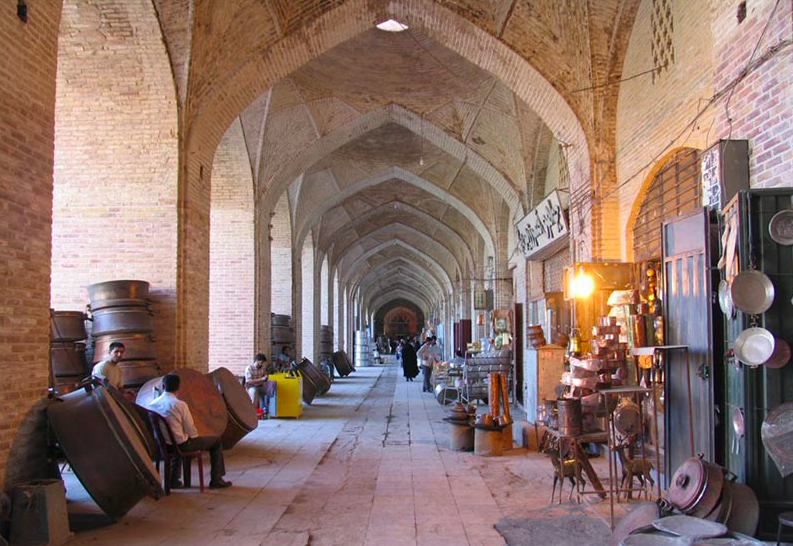
Weavers spend a long time behind the loom, and they slowly become companions of the carpet. In Barzok, a weaver said: “If one walks with their shoes on the carpet, it is like they are walking on our eyes, those people do not value our work.” This companionship lasts to the point that the weaver considers a carpet as part of her body—her eyes which are considered to be the most fragile and precious part of the body.
However, once the carpet is complete, their companionship ends, and then the carpet moves away from the workshop to someone else’s house. The person who buys the carpet, never having seen the workshop, does not quite understand the process by which it is made, how much sweat and blood goes into it; or how much the weaver’s eyes have deteriorated after hours working at the loom.
The development of carpet capitalism by the British East India Company in Iran in the late 1800s and early 1900s drastically changed weaving traditions, women weavers’ livelihoods, and their rug designs. Foreign companies hired rural women as weavers to maximize productions to meet new and growing demand outside of Iran for Persian carpets. Gradually, men became supervisors or owners of the workshops, while women and children were put to work as weavers. Men also took the role of naqshe-khan, loudly chanting the patterns, while women rarely learned the naqshe-khani, in part to avoid raising up their voices in the presence of strange men.
Naqshe-Khani is the practice of reading aloud carpet designs for weavers in carpet workshops. Naqshe in Persian means design, or map and khani means reading or singing. Before a carpet is made, the carpet designer sketches patterns and colors on graph paper to create a map. Naqshe-khan is the person who reads rug maps for the weavers out loud in order to make the process of weaving faster and to minimize human errors. For instance, naqshe-khan says to the weavers: two red nodes next to three blue on the second row.
Before the industrialization of carpet production, women used to weave at home and the carpet was generally directly used by laborers themselves, not sold to others. The separation between the household and the workplace caused women to bring their infants to workshops with them—binding them to their backs and singing lullabies to put them to sleep. When their babies grew into children, they were put to work as weavers too.
Carpet designs also changed since carpet merchants began developing and standardizing designs to meet their customers’ demands. Before the commercialization of rug production, carpets were generally not made to order by anyone or to enter into the market, thus there was great flexibility in the designs weavers could make. Women weaved at home and their own life stories and quotidian experiences could be the subjects of their designs. In contrast to these improvised designs, which are still practiced among women nomads or in small villages, were commercialized designs based on patterns liked and ordered by consumers.
For example, Kashan marketable designs today include gol-dan (vase), lachak o toranj (corner and medallion), mehrab (prayer direction toward Mecca), and shekaar (hunting). Compared to these fixed commercialized designs, carpet merchants call women’s improvised designs ghalat (incorrect) because they do not follow the standardized designs or the common rectangular carpet forms. However, now that carpets have become overwhelmingly standardized, these ghalat carpets are highly valued because of their uniqueness.
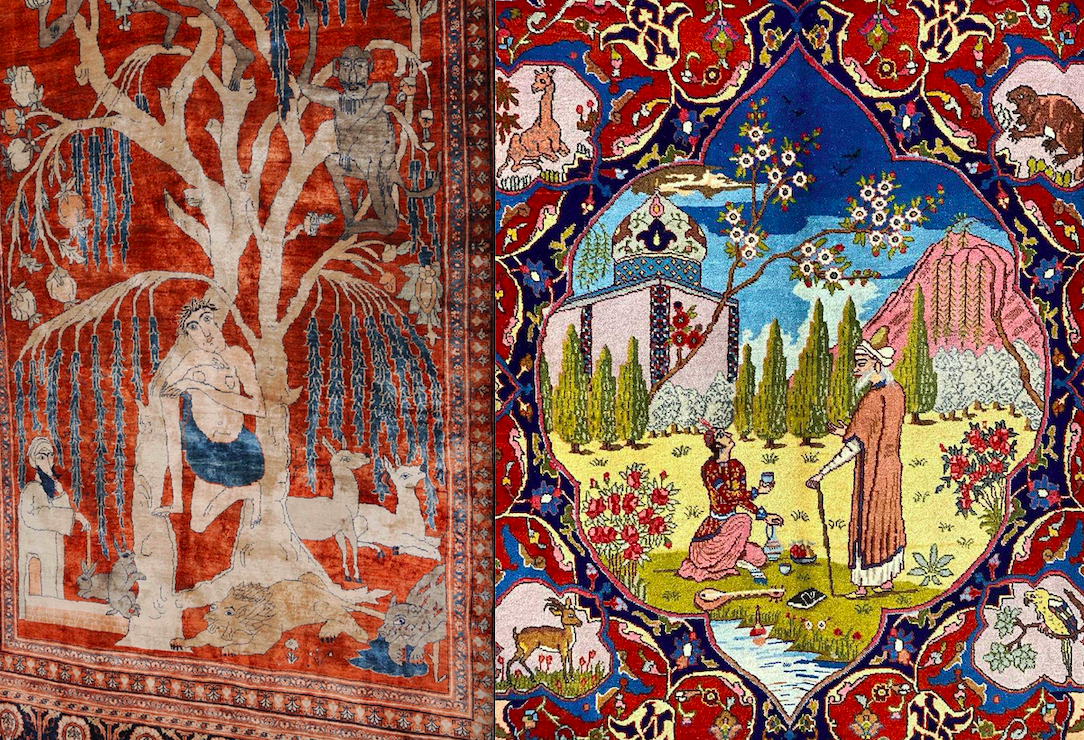
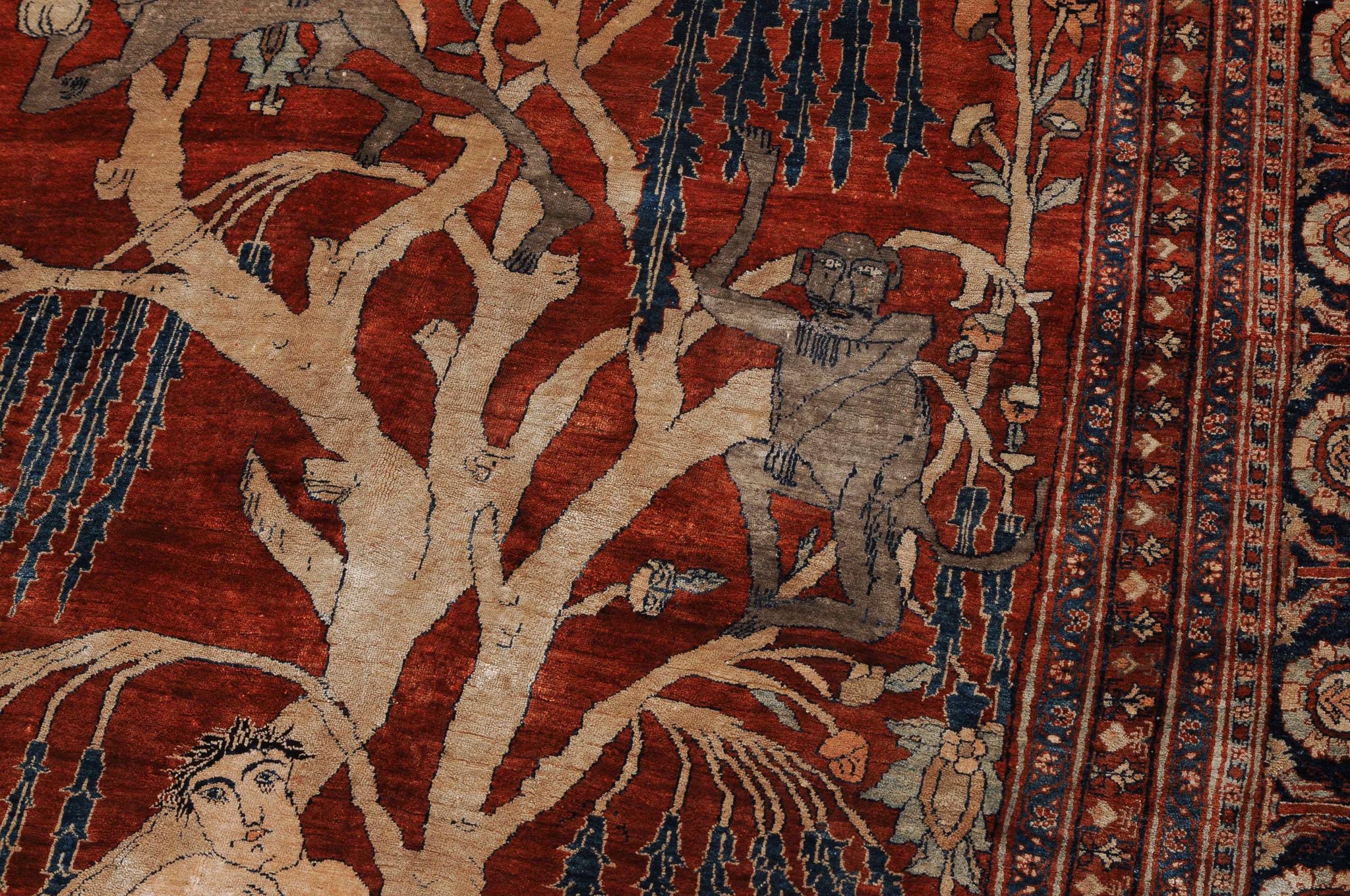
Ghalat carpets are valued because they often contain untold stories. For instance, Narges Erami describes a rug in her article, Of Ladders and Looms, which was first woven by a woman from the Qashqa’i nomadic tribe while pregnant. The design reflects the life story of a mother and daughter, which includes several pictures of the pair. The mother wove the first picture, but she died in the process of delivering birth. It was the daughter who completed her mother’s unfinished rug.
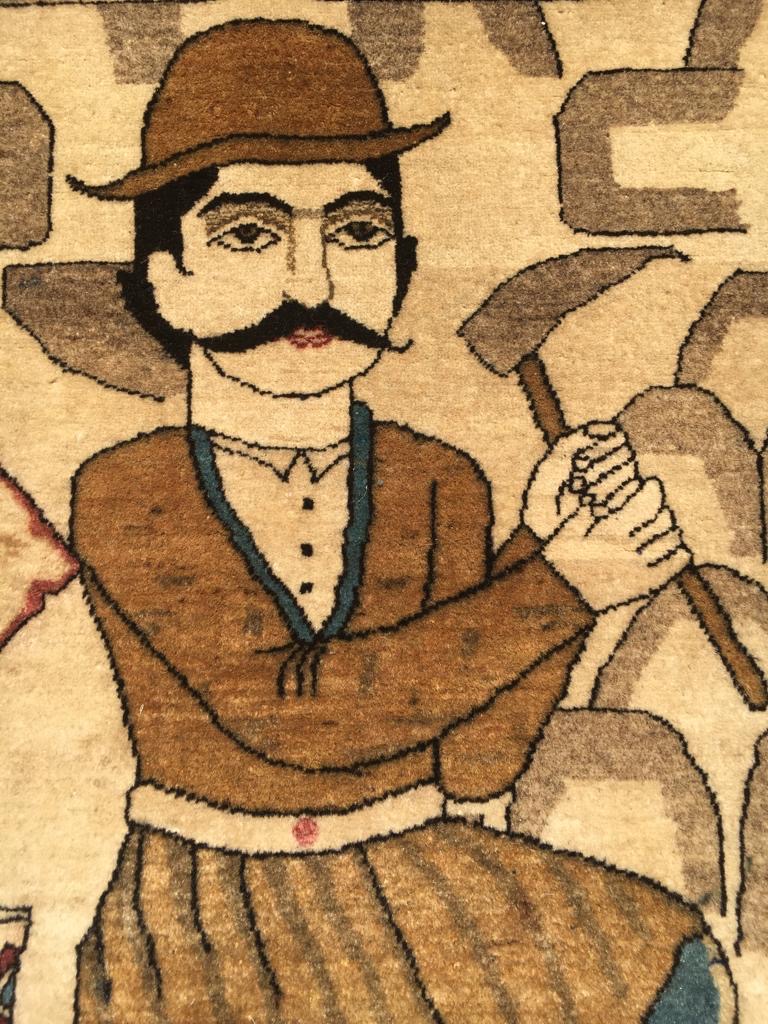
Carpets were meant to stay with female weavers. From early ages, girls wove their stories in rugs until they moved the carpet to their new husbands’ houses as a dowry. In this way, they ensured their life stories would be passed down from mothers to daughters through rugs. However, with the industrialization of carpet-weaving, the workshop owners started designing carpets and carpets were moved outside weavers’ houses. It was the workshop master and carpet designers that dictated the patterns to weavers—weavers’ stories remained untold.
Hence, the practice of naqshe-khani, in which the workshop master voices the pattern, emerges at the point when carpet-weaving becomes industrial and oriented toward the consumer. Although today, the naqshe-khani is often thought of as a traditional singing practice, it is in fact closely tied to the restructuring of the carpet market along capitalist and industrialist lines.
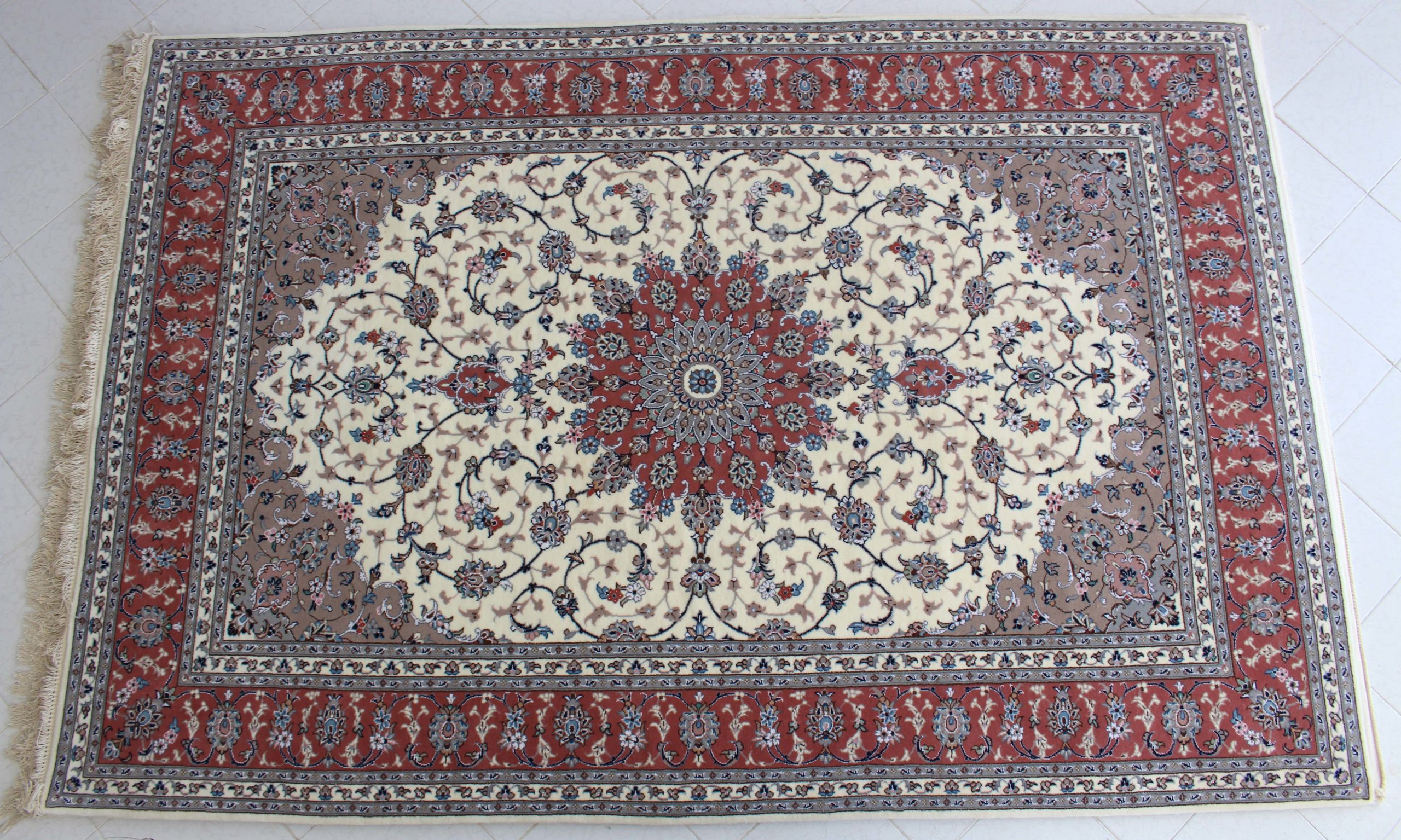
These social and economic changes not only impacted women weavers’ livelihoods and their carpet designs, but also the soundscape of workshops. After the Islamic revolution of 1979, the eight years’ war between Iran and Iraq (1980-1988), and the rise of carpet industries in neighboring countries – aided by US sanctions on Iran which limited the ability of Iranians to sell carpets abroad – traditional workshops faced an economic decline. As a result, men left workshops for jobs with higher incomes. Women who were still financial providers for their households,meanwhile, took over all tasks in many workshops.
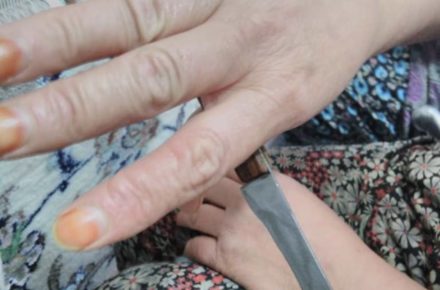
Most female weavers in Kashan began weaving from the early age of five or six years old. Today, they are in their forties and fifties. However, their calloused hands make it seem as if they are older. The supervisor of the Kashan workshop, Mrs. Rahimi, was a young lady who had a master’s degree in agricultural engineering.
Carpet weaving is a tradition in her family, but “Neither [her], nor most workers here have learned to do naqshe-khani. Nowadays, most workers are trained and educated so they can read the patterns for themselves.” Naqshe-khan was an essential role in the old days, but eventually lost its function. Hence, naqshe-khani is facing a decline—leaving the soundscape of most carpet workshops.
Carpet capitalism also changed mothers’ lullabies in workshops. Nowadays, mothers seldom bring their children to the workshop. Whereas previously, child labor was common in Iran, the government has outlawed child labour and since the 1990s has opened schools in even the most remote villages. As a result, most families started to send their children to school. Even though children are not with them in workshops, mothers still sing in lullaby modes.
Their themes, however, are related to work hardship, instead of babies. Such songs show how motherhood and the struggles to financially provide for their children with their labor are strongly connected for weaver women in rural Iran. For instance, one of the weavers in Barzok recited this poem:
I’m a carpet weaver
I didn’t clean my house, I weave
I didn’t do my chores, I weave
My baby needs bathing, I weave
قالی بافَم
خونه ام نروفته قالی بافُم
کارام نکرده قالی بافُم
بچه ام نشسته قالی بافُم
The poem above represents that weavers’ lifestyles and weaving are strongly interwoven in a way that she has dedicated all of her life to weaving.
My heart hurts from the pain
You are one without pains that you laugh at my pains
دلم درد میکنه از دردمندی
تو بی دردی که به دردم بخندی
Inside workshops, when a weaver sings in lullaby style, she reminds us that she is working very hard to do her motherly duties. Lullabies are mothers’ wishes for their children, grievances, and prayers that have been passed down orally to next generations.
These songs contain two parts: the melody, and the poem. Out of the two, the melody catches the child’s ears. The child does not understand the poetry portion of a lullaby, but it is the intimacy with the mother’s voice that puts babies to sleep. The second part, the poem, is for mother, because she is actually talking to her cradle child. These songs contain the mother’s long-awaited dreams and prayers for her child:
Sleep quietly, almond blossom, to make me happy when you become a groom
بخواب آروم گل بادوم به دومادیت بکن شادم
Working at the carpet workshops, however, has influenced the subject of female weavers’ lullabies similar to their ghalat designs. The pain and toil of the working process replaced the motherly affections for her infant in a way that her songs evoke the hardship and hazards of the work.
Zahra, similar to Mrs. O, put texts into a pre-existent lullaby melody. A lullaby that they both express their pains through it—one sings about her “fingers bleeding,” the other a pain that she has no remedy for.
Tracing capitalism in Iran’s carpet industry, and its effects lead us to realize that the domains of musical, social, economic, or environmental life are closely interwoven. If before the industrialization of carpet production, carpets used to stay with weavers, passed down from mothers to daughters as a dowry, currently rugs must be separated from the weaver to make “the weaving money.”
Despite many obstacles, these women have always carried the tradition of carpet weaving in Iran and kept the atmosphere of workshops alive with their voices. Expressing their pains and life stories through singing while working creates a sociality among female weavers, which testify to being in this world.
As Hannah Arendt says: “The presence of others who see what we see and hear what we hear assures us of the reality of the world and ourselves.”
References:
Arendt, Hannah. 1989 [1959]. Ch3: Labor; Ch4: Work. In the Human Condition. Chicago: University of Chicago. Pp. 79 – 174.
Atar, Ali. “A look at Sima Bina’s Lullabies Album.” BBC News Persian, BBC. Translated by Golriz Shayani. 11 Jan. 2010.
Cohen, Norm. “Work songs.” Grove Music Online. 31 Jan. 2014.
Dillon, Robert J. 1976. “Carpet Capitalism and Craft Involution in Kirman, Iran: A Study in Economic Anthropology.” PhD Dissertation, Columbia University. ProQuest.
Erami, Narges. “Of Ladders and Looms: Moving through Walter Benjamin’s ‘Storyteller.’” Anthropological Theory, vol. 15, no. 1, Mar. 2015, pp. 92–105.
Karimi, Zahra. 2008. “The Effects of International Trade on Gender Inequality: Women Carpet Weavers of Iran.” WP 2010–033. Levy Economics Institute.
Maghoum, Behzad. 2016. “موسیقی قالیبافی.”IRNA News Agency.
Official Sima Bina. “Maestra Sima Bina Iranian Lullabies (CD سیما بینا : کتاب لالاییهای ایرانی همراه با چهار).” YouTube. November 20, 2015.Video, 00:44.
Roots Revival. “The Woven Sounds – Zahra Jahani & Mehdi Aminian – A Spontaneous duet.” YouTube. July 25, 2018. Video, 2:48.









